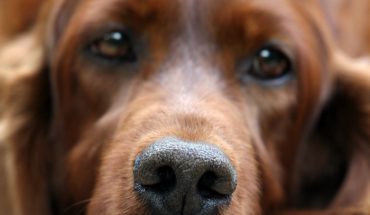Clamp2 provides vaccine hope for future pandemics: The University of Queensland is set to take a second-generation molecular clamp vaccine to a proof-of-concept human trial.
The Coalition for Epidemic Preparedness Innovation (CEPI) has announced in Brisbane today that it will provide up to AU$8.5 million to support further development of the re-engineered technology for use in the global response to future disease outbreaks.
The University of Queensland is set to take a second-generation molecular clamp vaccine to a proof-of-concept human trial.
The Coalition for Epidemic Preparedness Innovation (CEPI) has announced in Brisbane today that it will provide up to AU$8.5 million to support further development of the re-engineered technology for use in the global response to future disease outbreaks.
Associate Professor Keith Chappell, co-leader of UQ’s Rapid Response Vaccine Pipeline, said pre-clinical testing had shown the ‘Clamp2’ platform was meeting all expectations, producing stabilised antigens and inducing strong neutralising immune responses.
“We have been able to validate the Clamp2 platform in the laboratory and show that it is equivalent to the original platform across multiple virus families including influenza virus, Nipah virus and SARS-CoV-2,” Dr Chappell said.
“Importantly, this re-engineered technology does not pose any issue with diagnostic interference as was encountered in 2020.
“This progress has been possible through the continuing support from CEPI, the Queensland and Australian Governments and philanthropic partners.”
Dr Melanie Saville, Executive Director of Vaccine R&D at CEPI, said the UQ team had demonstrated true grit and the power of the scientific process to yield tangible advances in vaccinology.
“The second-generation molecular clamp vaccine technology that UQ have developed could provide the world with an additional tool to rapidly respond to future pandemic threats.”
The clinical batch of the Clamp2 vaccine will be manufactured at the Queensland node of the National Biologics Facility (NBF) housed within UQ’s Australian Institute for Bioengineering and Nanotechnology.
Ben Hughes, Interim Director of NBF, said it was a significant achievement that a pivotal, proof-of-concept clinical trial would be conducted with material produced in Brisbane at UQ.
“This will be a Phase I trial to assess the safety and efficacy of the clamp2 platform in healthy volunteers,” Mr Hughes said.
“While we have selected a Clamp2 SARS-CoV-2 vaccine for the trial, this is to demonstrate the effectiveness and potential benefits of this platform compared to a currently licensed COVID-19 vaccine.”
Associate Professor Dan Watterson, who spearheaded the successful Clamp2 redesign, said it was important for people to understand the ultimate aim was not to rush a new COVID-19 vaccine to market.
“This is about the role this technology could play in safeguarding against future pandemics, and ensuring we have an Australian-based rapid response vaccine pipeline and the team and infrastructure ready to deliver clinical-grade material should it be needed in the future,” Dr Watterson said.
“Having this capability in Queensland complements planning for a new Translational Manufacturing facility at the TRI, a facility that will support future efforts to progress therapeutic and vaccine candidates through the clinical trials process and to market.”
Queensland Deputy Premier and State Development Minister Steven Miles said the Palaszczuk Government had invested $10 million to assist UQ develop the revolutionary molecular clamp platform.
“This innovative work by Queensland researchers has the potential to become a global game-changer,” Mr Miles said.
“We can be incredibly proud the next big innovation in lifesaving vaccine technology could be stamped as Made in Queensland.
“With all eyes on Queensland in the lead-up to the Brisbane 2032 Olympic and Paralympic Games, we will continue to encourage innovation to drive economic growth and jobs.”

A researcher puts a test tube in a centrifure at AIBN Image: The University of Queensland
Professor Paul Young, co-leader of the team acknowledged the generous continuing support of government, the community and philanthropic partners.
“Our partners have been very generous, and their contributions have allowed us to continue working towards the outcome that we have announced today,” Professor Young said.
“We are very thankful they have stood with us as we continue this journey, and I hope they are proud of the progress that they have helped us make.”
As part of UQ’s partnering agreement with CEPI, and in line with CEPI’s equitable access policy, UQ agrees that vaccine candidates produced using their platform technology will be available in an outbreak situation to populations at risk including in low-income and middle-income countries.
Philanthropic partners include the Paul Ramsay Foundation, BHP Foundation, Newcrest, Glencore, RACQ and its members, A2 Milk, The Lott and Aurizon.
- Gut microbiome could delay onset of type 1 diabetes - 3rd April 2025
- The da Vinci 5 Robot Is Set To Transform Bariatric Care: - 31st March 2025
- Beyond money: the hidden drivers fuelling child food insecurity - 31st March 2025






